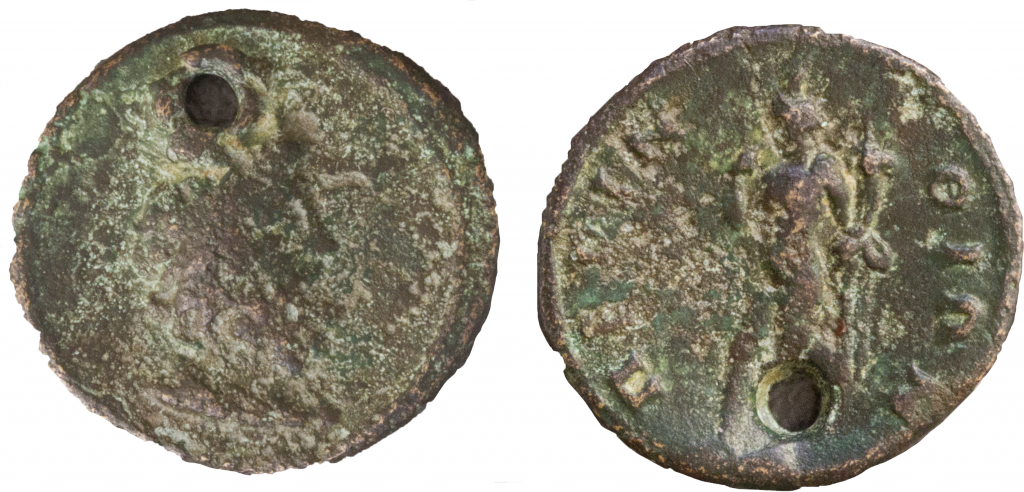June 5, 2015, by Will Leveritt
Livi Webster reports about her recent research trip to the British Museum
Text by Livi Webster
Image © Mint Imperials
“Did you bring your own magnifying glass, or do you need to borrow one?”
A couple of weeks ago I spent ten hours locked in a room exploring the coin catalogues in the Department of Coins and Medals at the British Museum, which was a lot more fun than it sounds.

AE20 of Perinthos. Obverse has laureate head of Zeus right, reverse has figure standing left with cornucopia, PERINTHIWN. 5.32g, 20mm, 6 o’clock.
I’m a relatively recent coin convert, but now I think that they’re fabulous. If you’d told me a few years ago that I would be writing a thesis on coins, I’d have been a mixture of wildly entertained and terrified, but coins offer unique advantages in the field of visual culture. In contrast to other material objects, where the term “circa” is widespread and usually indicates decades, if not centuries, coins can frequently be closely dated; we also know where they were produced, and their function. They capture unique snapshots of scenes from religious, political and civic life, and despite their size can be incredibly detailed.
I study the Roman Near East (Syria, Jordan, Palestine, Israel, and Lebanon), which was mostly ignored or ridiculed by Roman authors and is largely inaccessible today. The recent seizure of Palmyra by IS highlights the enormous threat to cultural heritage. Coins preserve a huge amount of images of gods, temples, buildings, rulers and festivals, which are now either lost or unreachable, and provide a safe medium to examine these societies closely.
The relevant British Museum Coin Catalogues were published at the turn of the century, so I decided to see if there were any recent additions (unsurprisingly, there were). The Department of Coins and Medals’ website has a contact list, so you can directly email the person who is most familiar with your region. I arrived at the British Museum, armed with paper, pens, ID and the all-important magnifying glass, and once inside was led into a study room and told to leave my bag at the other end of the room. The necessary preliminaries conducted, two trays of coins were brought out. After my initial nervousness at being presented with these original objects had settled, there was something amazing about being able physically to handle the coins I have spent such a long time researching. I wasn’t allowed to take photos then, but I can request them now.
Once you have finished with your trays, you tell the person supervising and they swap them for the next two. The study room is open from 10am-1pm then 2pm-4pm, and as you need to be constantly watched this must be a little tedious for the observer, but nobody held it against me and were all so helpful. I was given the coin catalogues to consult, scales and a lamp to help me see better (and after 3 hours, I definitely needed it). I was allowed to pick up the coins by their edges without gloves, and nobody minded when I dropped one and temporarily lost it in my scarf.
I can’t recommend a research visit enough to anybody working with coins. Being able to handle them is much more rewarding that using (often poor quality) images, and is also hugely exciting. I would say be realistic about how much time you’ll need, and take a pencil to make quick sketches of unpublished coins you may find. Give the Department a long list of cities you’d like to see and which time period you need, as then they can have them ready for you rather than having to rush around on the day. Everyone was really accommodating and made my first research trip run smoothly, and I am grateful to everyone who helped out!
No comments yet, fill out a comment to be the first

Leave a Reply